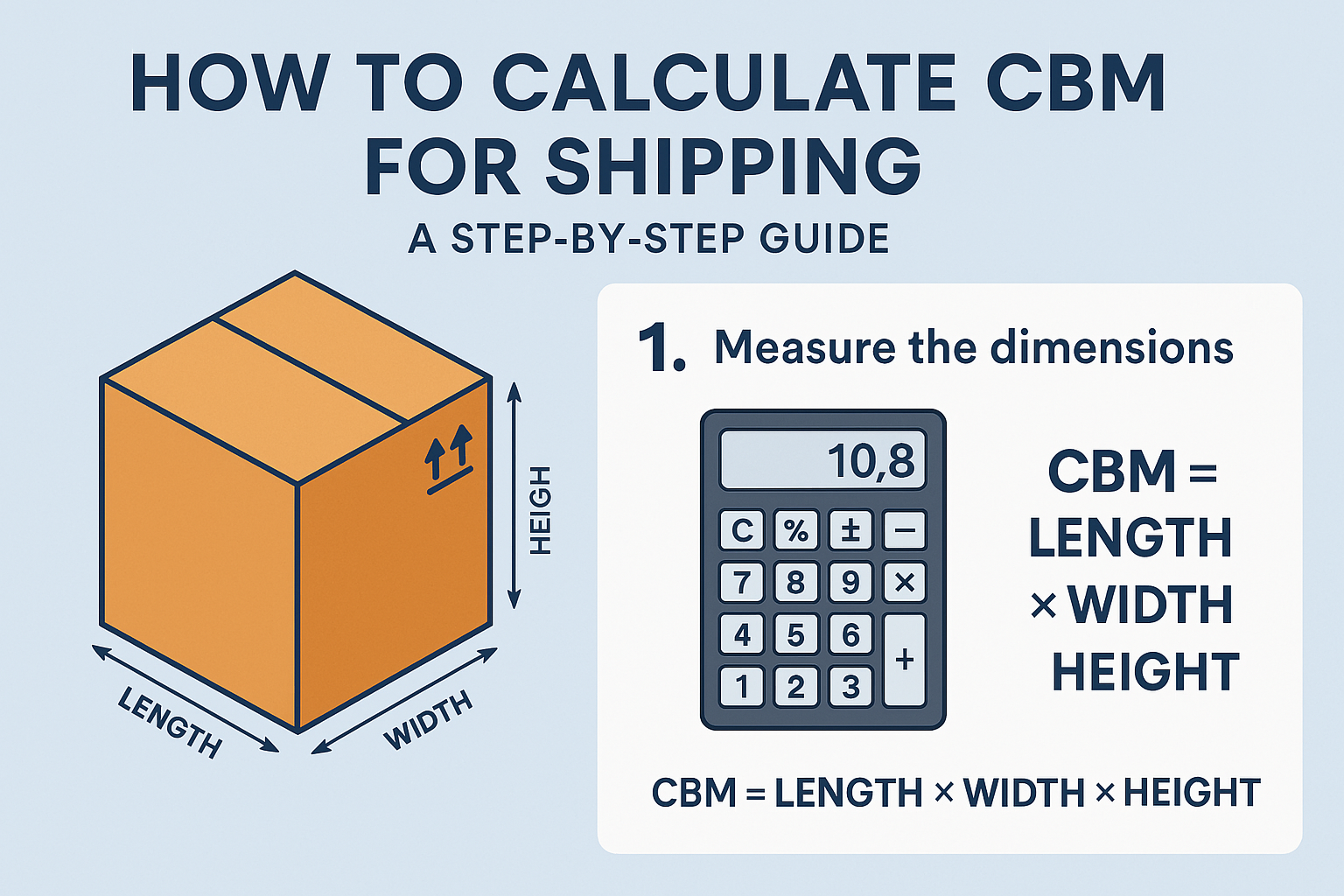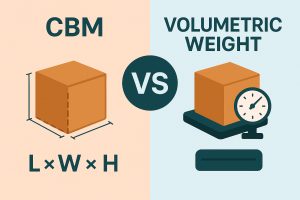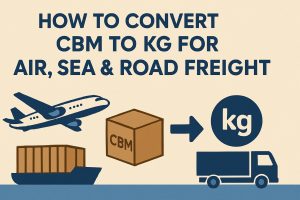Accurate CBM (Cubic Meter) calculations are the backbone of cost-effective shipping. Whether you’re shipping by sea, air, or road, miscalculating CBM can lead to unexpected fees, delayed shipments, and wasted container space. In this guide, we’ll break down exactly how to calculate CBM for your cargo, with practical examples and tips to optimize your logistics.
What is CBM (Cubic Meter)?
CBM stands for Cubic Meter, the standard unit of measurement used in global shipping to determine how much space your cargo occupies in a container or vehicle. Carriers use CBM to calculate freight charges, especially for LCL (Less than Container Load) shipments, where you pay for the space you use.
The CBM Formula
The formula to calculate CBM is simple:
CBM = Length (m) × Width (m) × Height (m)
Example:
If your box measures 2m (L) × 1.5m (W) × 1m (H), the CBM is:
2 × 1.5 × 1 = 3 CBM
Step-by-Step Guide to Calculate CBM
Step 1: Measure Your Package Dimensions
Use a tape measure or laser tool to record the length, width, and height of your shipment in meters (metric units are standard for international shipping).
⚠️ Pro Tip: Round up measurements to the nearest centimeter to avoid underestimating.
Step 2: Apply the CBM Formula
Multiply the three dimensions together. For multiple packages of the same size, use:
Total CBM = CBM per package × Number of packages
Example:
– 10 boxes, each measuring 0.5m × 0.5m × 0.5m
– CBM per box = 0.5 × 0.5 × 0.5 = 0.125 CBM
– Total CBM = 0.125 × 10 = 1.25 CBM
Step 3: Factor in Volumetric Weight (If Required)
For air freight or courier services (like DHL or FedEx), carriers often charge based on volumetric weight instead of actual weight. Calculate it using:
Volumetric Weight (kg) = (Length × Width × Height in cm) / 5000
Compare this to the actual weight – the higher value determines the cost.
CBM Calculation Examples
Example 1: Sea Freight (LCL Shipping)
You’re shipping 50 wooden crates, each measuring 1.2m (L) × 1m (W) × 0.8m (H).
– CBM per crate = 1.2 × 1 × 0.8 = 0.96 CBM
– Total CBM = 0.96 × 50 = 48 CBM
– If a 20ft container holds 33 CBM, you’d need 2 containers (or opt for LCL sharing).
Example 2: E-Commerce Air Shipment
A lightweight but bulky package measures 0.8m × 0.5m × 0.3m (actual weight = 5kg).
– CBM = 0.8 × 0.5 × 0.3 = 0.12 CBM
– Volumetric Weight = (80cm × 50cm × 30cm) / 5000 = 24kg
– Carrier charges based on 24kg (not 5kg).
4 Common CBM Mistakes to Avoid
- Using inches or feet instead of meters – Always convert to metric.
- Ignoring packaging protrusions – Measure the outermost points.
- Forgetting to account for pallets – Include pallet height in your total CBM.
How Our CBM Calculator Simplifies the Process
Manually calculating CBM for complex shipments? Not anymore. Try our free CBM Calculator to:
- ✅ Instantly compute CBM for multiple packages.
- ✅ Convert CBM to volumetric weight automatically.
FAQs
Q: How do I calculate CBM for cylindrical packages?
A: Use the formula for cylinder volume: π × (radius in meters)² × height.
Q: Do shipping companies round up CBM?
A: Most carriers round up to the nearest 0.1 CBM – always confirm with your provider.
Q: What’s the CBM of a 40ft container?
A: Typically 67 CBM, but dimensions vary.
Final Thoughts
Mastering CBM calculations puts you in control of your shipping budget and prevents costly surprises. For quick, error-free results, leverage tools like our CBM Calculator to streamline your logistics.


